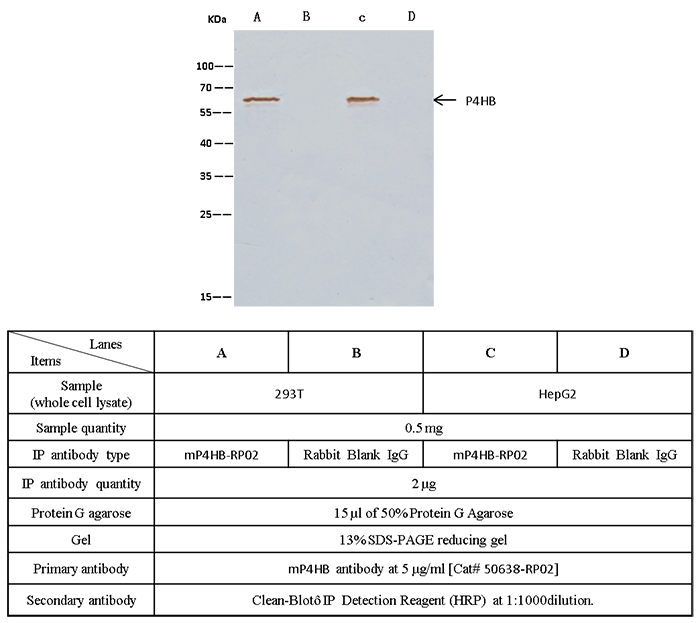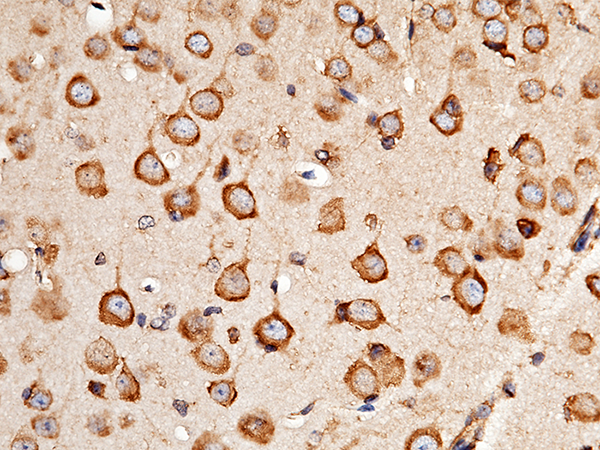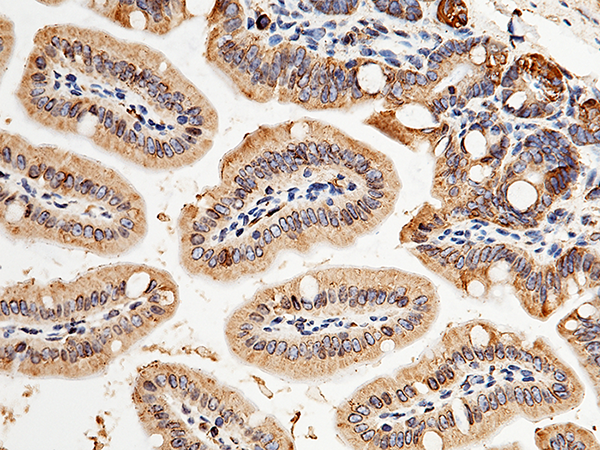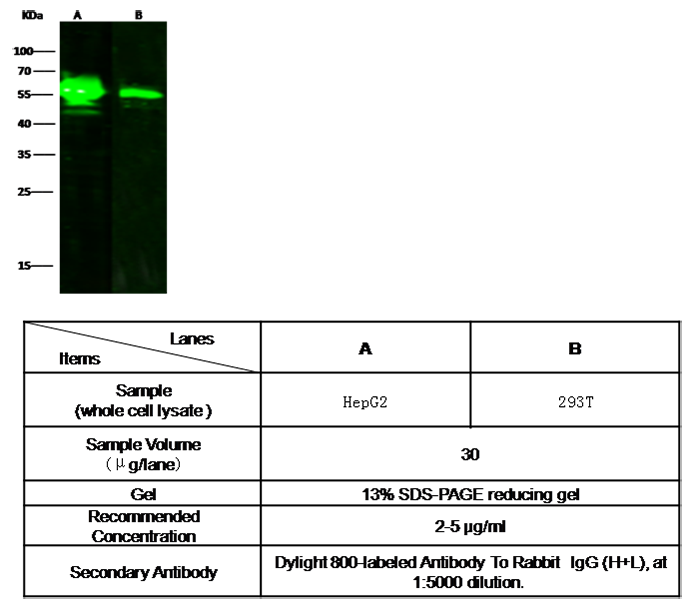-
Product Name
Anti-P4HB antibody
- Documents
-
Description
Rabbit polyclonal to P4HB
-
Tested applications
ELISA, WB, IHC-P, IP
-
Species reactivity
Mouse P4HB
-
Alternative names
DSI antibody; ERBA2L antibody; ERp59 antibody; GIT antibody; P4hb antibody; P4HB antibody; P4Hbeta antibody; DSI antibody; GIT antibody; PDI antibody; PHDB antibody; PDIA1 antibody; PO4DB antibody; PO4HB antibody; PROHB antibody; ERBA2L antibody; P4Hbeta antibody; PDI antibody; Thbp antibody; ERp59 antibody; Pdia1 antibody; PDI antibody; PDI antibody; Pdia1 antibody; PDIA1 antibody; PHDB antibody; PO4DB antibody; PO4HB antibody; PROHB antibody; RP23-84C12.2 antibody; Thbp antibody
- Immunogen
-
Isotype
Rabbit IgG
-
Preparation
Produced in rabbits immunized with purified, recombinant Mouse P4HB (rM P4HB; NP_035162.1; Met 1-Lys 506). P4HB specific IgG was purified by Mouse P4HB affinity chromatography.
-
Clonality
Polyclonal
-
Formulation
0.2 μm filtered solution in PBS with 5% trehalose
-
Storage instructions
This antibody can be stored at 2℃-8℃ for one month without detectable loss of activity. Antibody products are stable for twelve months from date of receipt when stored at -20℃ to -80℃. Preservative-Free.
Sodium azide is recommended to avoid contamination (final concentration 0.05%-0.1%). It is toxic to cells and should be disposed of properly. Avoid repeated freeze-thaw cycles. -
Applications
WB: 2-5 μg/mL
ELISA: 0.1-0.2 μg/mL
This antibody can be used at 0.1-0.2 μg/mL with the appropriate secondary reagents to detect Mouse P4HB. The detection limit for Mouse P4HB is approximately 0.00245 ng/well.
IHC-P: 0.1-2 μg/mL
IP: 1-4 μg/mg of lysate
-
Validations

P4HB Antibody, Rabbit PAb, Antigen Affinity Purified

P4HB Antibody, Rabbit PAb, Antigen Affinity Purified, Immunohistochemistry
Immunochemical staining of mouse P4HB in mouse brain with rabbit polyclonal antibody (1 µg/mL, formalin-fixed paraffin embedded sections).

P4HB Antibody, Rabbit PAb, Antigen Affinity Purified, Immunohistochemistry
Immunochemical staining of mouse P4HB in mouse intestine with rabbit polyclonal antibody (1 µg/mL, formalin-fixed paraffin embedded sections).

P4HB Antibody, Rabbit PAb, Antigen Affinity Purified, Western blot
-
Background
Mouse protein disulfide-isomerase, also known as Cellular thyroid hormone-binding protein, Prolyl 4-hydroxylase subunit beta, p55 and P4HB, is a peripheral membrane protein which belongs to the protein disulfide isomerase family. P4HB is highly abundant. In some cell types, it seems to be also secreted or associated with the plasma membrane, where it undergoes constant shedding and replacement from intracellular sources. P4HB localizes near CD4-enriched regions on lymphoid cell surfaces. It is identified by mass spectrometry in melanosome fractions from stage I to stage IV. P4HB reduces and may activate fusogenic properties of HIV-1 gp120 surface protein, thereby enabling HIV-1 entry into the cell. P4HB catalyzes the formation, breakage and rearrangement of disulfide bonds. At the cell surface, it seems to act as a reductase that cleaves disulfide bonds of proteins attached to the cell. P4HB may therefore cause structural modifications of exofacial proteins. Inside the cell, it seems to form/rearrange disulfide bonds of nascent proteins. At high concentrations, P4HB functions as a chaperone that inhibits aggregation of misfolded proteins. At low concentrations, it facilitates aggregation (anti-chaperone activity). P4HB may be involved with other chaperones in the structural modification of the TG precursor in hormone biogenesis. It also acts a structural subunit of various enzymes such as prolyl 4-hydroxylase and microsomal triacylglycerol transfer protein MTTP.
-
References
- Kivirikko KI, et al., 1989, FASEB J., 3 (5): 1609-17.
- Pihlajaniemi T, et al.,1991, J Hepatol., 13, Suppl 3: S2
- Fenouillet E., et al., 2001, J. Infect. Dis. 183:744-752.
- Gevaert K., et al., 2003, Nat. Biotechnol. 21:566-569.
- Barbouche R., et al., 2003, J. Biol. Chem. 278:3131-3136.
Related Products / Services
Please note: All products are "FOR RESEARCH USE ONLY AND ARE NOT INTENDED FOR DIAGNOSTIC OR THERAPEUTIC USE"
